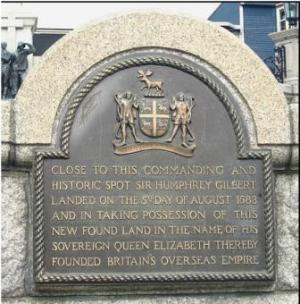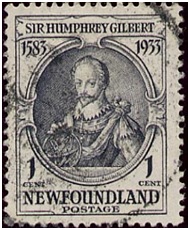|
In late 1600 Sir Walter Raleigh was writing to Sir Robert Cecil regarding the imprisonment of Robert Devereux, Second Earl of Essex once a great favourite of Elizabeth I but by then in The Tower charged with Treason.
In the course of this letter Sir Walter wrote “Kelloway lives that murdered the brother of Horsey; and Horsey let him go by all his lifetime.” Who was Raleigh talking about? Which Kelloway? Which Horsey? Here are the family links. SIR WALTER RALEIGHSir Walter Raleigh (1554-1618) was the son of Walter Raleigh and Katherine Champernowne (her second husband and his second wife. His first wife being Joanne Drake an Aunt to Sir Francis Drake and granddaughter of John Drake and Agnes Kellaway sister of John Kellaway of Cullompton). He had a full brother Carew Raleigh (c.1550-1625). He was an English writer, poet, soldier, politician, courtier, spy, and explorer He is also well known for popularising tobacco in England.He rose rapidly in the favour of Queen Elizabeth I and was knighted in 1585. Raleigh was instrumental in the English colonisation of North America and was granted a royal patent to explore Virginia, which paved the way for future English settlements. In 1591, he secretly married Elizabeth Throckmorton, one of the Queen's ladies-in-waiting, without the Queen's permission, for which he and his wife were sent to the Tower of London. After his release, they retired to his estate at Sherborne Castle, Dorset where he built a new house, completed in 1594, known then as Sherborne Lodge. Since extended, it is now known as Sherborne (new) Castle. He made friends with the local gentry, such as Sir Ralph Horsey of Clifton Maybank and Charles Thynne of Longleat. Raleigh himself never visited North America, although he led expeditions in 1595 and 1617 to the Orinoco River basin in South America in search of the golden city of El Dorado. Instead, he sent others to found the Roanoke Colony, later known as the “Lost Colony”. The Chowan River is one of the three oldest surviving English place-names in the U.S. Along with Roanoke Island and the Neuse River, it was named in 1584 by Captains Philip Amadas and Arthur Barlowe, sent to explore the region by Sir Walter Raleigh. Their "Chowanook", or Chowanoke, name was shortened to Chowan. In 1587, Raleigh attempted a second expedition, again establishing a settlement on Roanoke Island. This time, a more diverse group of settlers was sent, including some entire families, under the governance of John White. After a short while in America, White returned to England to obtain more supplies for the colony, planning to return in a year. Unfortunately for the colonists at Roanoke, one year became three. When the supply ship arrived in Roanoke, three years later than planned, the colonists had disappeared. The only clue to their fate was the word "CROATOAN" and letters "CRO" carved into tree trunks. White had arranged with the settlers that if they should move, the name of their destination be carved into a tree or corner post. This suggested the possibilities that they had moved to Croatoan Island, but a hurricane prevented John White from investigating the island for survivors. Other speculation includes their having starved, or been swept away or lost at sea during the stormy weather of 1588. No further attempts at contact were recorded for some years. Whatever the fate of the settlers, the settlement is now remembered as the “Lost Colony of Roanoke Island”. These expeditions were funded primarily by Raleigh and his friends, but never provided the steady stream of revenue necessary to maintain a colony in America (subsequent colonisation attempts in the early 17th century were made under the joint-stock Virginia Company, which was able to raise the capital necessary to create successful colonies). The state capital of North Carolina, its second-largest city, was named Raleigh in 1792 after Sir Walter, sponsor of the Roanoke Colony. In the city, a bronze statue, which has been moved around different locations within the city, was cast in honour of the city′s namesake. The “Lost Colony” is commemorated at the Fort Raleigh National Historic Site on Roanoke Island, North Carolina.
SIR HUMPHREY GILBERTSir Walter′s mother′s first husband was Otho Gilbert by whom she had three sons. Humphrey Gilbert (1539 -1583) , Sir John and Adrian Gilbert. The family lived on the River Dart in Devon at a house called Greenways.Humphrey Gilbert was governor of Ulster and was known for his vicious suppression of the Irish during the Irish campaigns around 1569. After his return to England in 1570 he married the granddaughter of Sir William Kellaway, Ann Aucher with whom he had six sons John, Raleigh, Anthony, Arthur, Humphrey and Otho Gilbert. Sir Humphrey Gilbert was one of the leading advocates for the north-west passage and was granted, in 1578, six years exploration rights in North America. He finally acquired enough funds for an expedition in 1583. Gilbert set sail with a fleet of five vessels in June 1583. One of the vessels – Bark Raleigh, owned and commanded by Raleigh – turned back owing to lack of victuals. Gilbert′s crews were made up of misfits, criminals and pirates, but in spite of the many problems caused by their lawlessness, the fleet reached Newfoundland.
On arriving at the port of St John′s, Gilbert was blockaded by the fishing fleet under the organisation of the port admiral (an Englishman) on account of piracy committed against a Portuguese vessel in 1582 by one of Gilbert′s commanders. Once this resistance was overcome, Gilbert waved his letters patent about and, in a formal ceremony, took possession of Newfoundland (including the lands 200 leagues to the north and south) for the English crown on 5 August 1583. This involved the cutting of turf to symbolise the transfer of possession of the soil, according to the common law of England. The locals presented him with a dog, which he named Stella after the North Star. He claimed authority over the fish stations at St John′s and levied tax on the fishermen from several countries who worked this rich sea near the Grand Banks of Newfoundland. Within weeks his fleet departed, having made no attempt to form a settlement, due to lack of supplies. During the return voyage, Gilbert insisted on sailing in his hardy old favourite, HMS Squirrel. He soon ordered a controversial change of course for the fleet. Owing to his obstinacy and disregard of the views of superior mariners, the ship Delight ran aground and soon sank with the loss of all but sixteen of its crew on one of the sandbars of Sable Island. Delight had been the largest remaining ship in the squadron (an unwise choice to lead in uncharted coastal waters) and contained most of the remaining supplies. Gilbert decided to return to England but the fleet ran into storms and heavy seas and HMS Squirrel was lost with all hands on the night of 9th/10th September 1583. Sir Humphrey′s son Raleigh Gilbert was second in command for the unsuccessful Popham Colony in Maine 1607 KELLAWAY TREE LINKSSir William II KELLAWAY_____________________Dorothy Kellaway 1495-1569 m.2) Black Will Lyte m.Ann Hallways (The Lyte family was related to Horsey & Thynne) | | Francis d.1601______4 dau_____Ann Kellaway Otho Gilbert = Katherine = Walter Raleigh John m.John Aucher (1) Champernowne (2) Edward | | | Ambrose | | | Charles d.1605 Ann Aucher = Sir Humphrey GILBERT Sir Walter RALEIGH______________Carew RALEIGH 1539-1583 1552-1618 m.Dorothy | m.Elizabeth Throckmorton Thynne (W) | m.1591 | | 6 sons 1dau 3 sons (PART) HORSEY TREEJASPER HORSEY = JOAN WELLYFORD m.~1520 d.1545 d.1558 Left Asshe in Devon to Thomas Stowford | | | George HORSEY___________Thomas d.1573___________Sir Edward Horsey____Katherine d.1587 Gervase Captain IOW m.1)Mary Periam Philip d.1582 m.2)Ann Sadler John | Francis | William | Christopher | Jasper | | | SIR RALPH HORSEY _______________Jasper Horsey ________ 3da of Clifton Maybank d.1624 m.Edith Mohun d.1612 | 5s + 3daFor more detailed family trees see The Drake Raleigh Gilbert and Kellaway Links and The Horsey Tree CONCLUSIONSAre we any nearer to answering our initial questions? Clearly there is a relationship between the Rockbourne Kellaways and the Gilberts and to a lesser extent the Raleighs. Several of the sons of Sir William II were still alive in 1600. But to make things more difficult Sir Walter Raleigh and his friend Sir Ralph Horsey lived in Sherborne and the surrounding villages and the whole Sherborne Kellaway line lived in that area and could have known both men well. In addition we do not know the identity of the brother of Horsey. Sir Ralph had one brother who lived until 1624. So perhaps it was a brother of his father, George? There are plenty to choose from. Perhaps a brother-in-law?So: “Kelloway lives that murdered the brother of Horsey; and Horsey let him go by all his lifetime.”You would expect that the persons referred to would have been well known to Raleigh and Sir Robert Cecil so they must have been of some standing and known at court. Does the wording imply that the second Horsey is also dead? No trace of this murder has been found no clues are in evidence, no body and lots of suspects. It is just like an Agatha Christie novel which is quite appropriate as the Gilbert home of Greenways on the river Dart in Devon was later the country retreat of Agatha Christie herself. All these families were participants in the early exploration of the American Colonies. They were from the West Country and their friendship and kinship must have played some part in influencing others to travel to Virginia and Maryland etc. The Virginia Trading Company initially had a branch in Plymouth but this later folded leaving just the London based Company. There are many early settlers like Peter Callaway and later Joseph Callaway to America, often with unknown origins. So should West Country origins be considered or were they perhaps from London where the Virginia Trading Company was based and where there were soon Southwark Callaway families with links to Virginia? Of course the London Families arrived from all parts of the country again often with unknown origins. |


